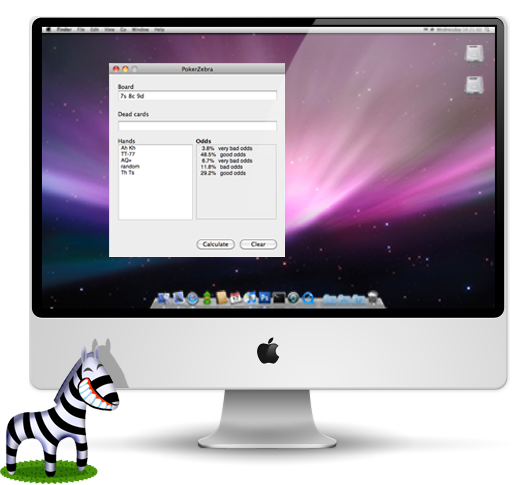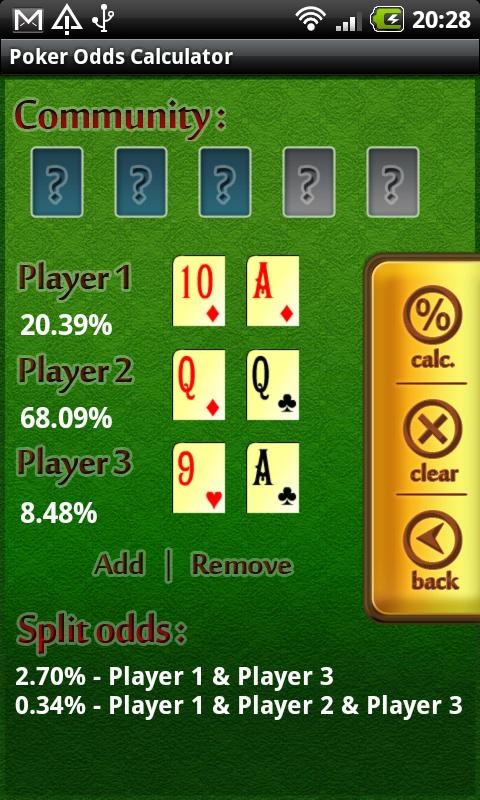

However our opponent is exactly the kind of loose-weak player to call in such a situation. Fold and save yourself some money.Īs far as the betting sequence went, we have a marginal hand at best. Our hand is basically a bluff catcher at this point and this guy doesn’t seem to bluff on the river. On the river comes a 10 and the opponent bets the size of the pot, thus giving us 2 to 1 on a call. He checks, we bet 2/3 the pot and the opponent again just calls. The turn is a 9 of the forth suit, which removes the possibility of a flush but completes a straight. The BB checks, we bet half the pot, he calls. We make a raise of 4xBB and everyone folds to the BB who calls.

#POKER COPILOT POT ODDS FULL#
Once again, we are UTG at a full ring table and we hold AKo. Let’s consider a situation similar to the previous one. To bet about half the pot seems correct – you don’t want to chaise him away here. This is a good place to value bet – your opponent is loose and passive. It is a good idea also to look up the villain’s Fold to C-Bet percentage – sometimes players insist on defending against C-Betting to an irrational degree and if such is the case, you can make a small bet on the flop (let’s say 1/3-1/2 of the pot), have it called, check the turn and over-bet the river making it look like a bluff. There is no danger of overpairs, flush or likely straight draws, so we should check and give him a chance to improve to the second best hand or bluff his money away. We can’t win much by betting here – the opponent will most likely fold. Do we check or bet? Let’s look at the stats. The flop comes 5 6 K of different suits, obviously a great flop for us.

For sake of simplicity we’ll assume all opponents have stacks of about 100BB/įull ring table, we are UTG (under the gun – first to act) and we hold AKo. Don’t forget that it actually shows the % of won pots but not how much money is won – a player win W$SD above 50 is not necessarily a winning one. It will be higher for tighter players and lower for looser ones. Have in mind that for shorter tables this HUD stat will be slightly higher. Opponents with WTSD at 20 and below should be bluffed non-stop and the 40+ you should definitely bet for value. Your own WTSD will vary according to your style, but optimal range is considered to be between 25 and 35. Conversely when you are against a player with low WTSD and high W$SD and he bets you strongly on the river – fold your marginal hands without thinking twice.īoth indicators converge relatively slowly and I wouldn’t put much trust in them before I have at least 500 hands on a player. If you play against somebody with a high WTSD you should be relentlessly value betting – your opponent is a calling station and will pay off your good hands. Use these poker HUD stats to figure out the probable strength of an opponent’s holding after the flop. As the percentage of hands a player goes to showdown with (WTSD) increases, the percentage of the hands he actually wins (W$SD) goes down (more hands=less quality).

Went to showdown (WTSD) and Won money at showdown (W$SD) are two inversely correlated indicators in online poker which can be used to read your opponents’ behavior after the flop.


 0 kommentar(er)
0 kommentar(er)
